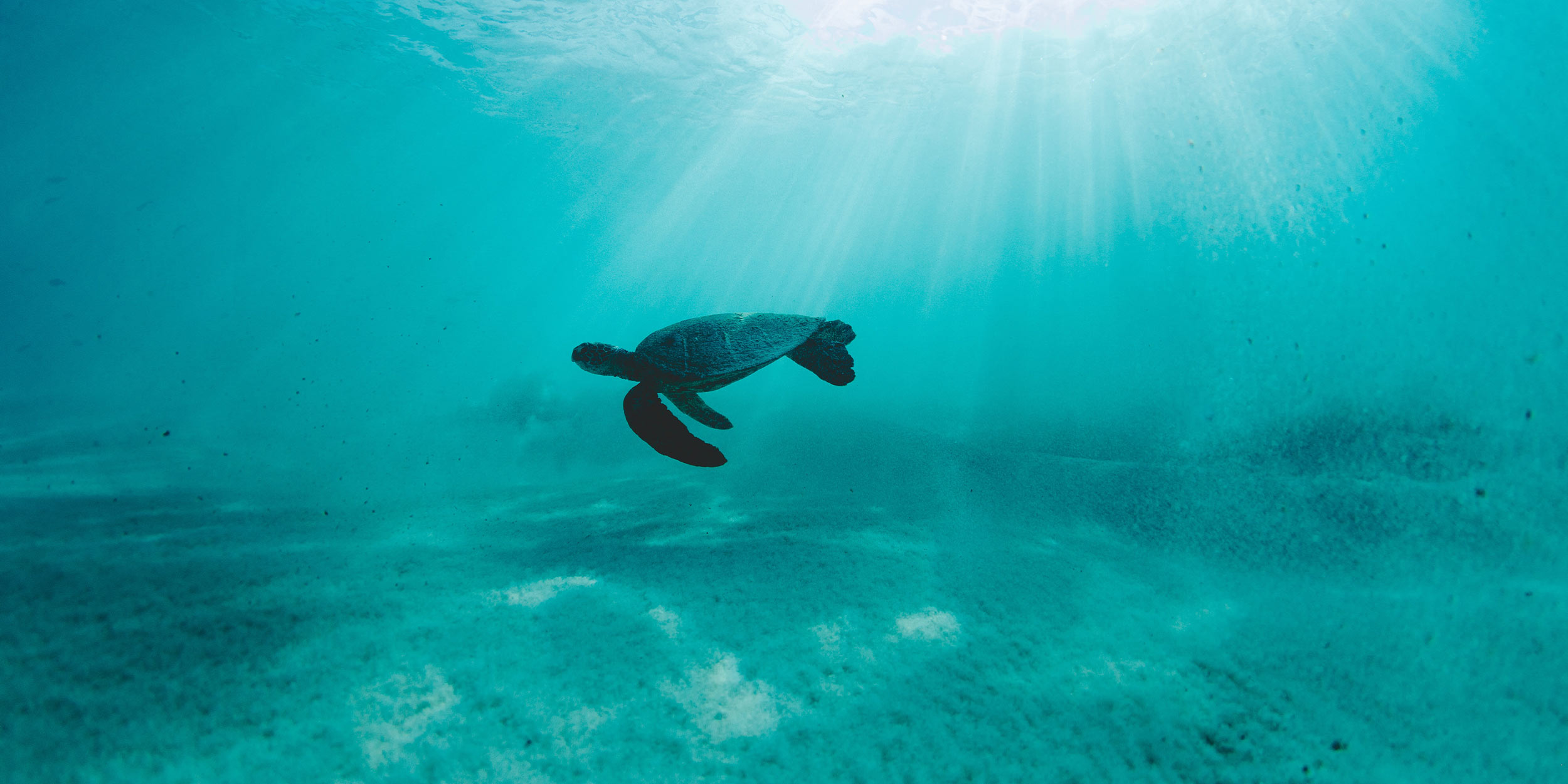How climate change is damaging the oceans
Climate resilienceArticleJune 8, 2023
Climate change is damaging our oceans by causing higher temperatures, sea-level rise and ocean acidification. But the oceans can help limit further global warming by absorbing CO2 from the atmosphere. Learn about the relationship between our oceans and climate change.
It is almost impossible to exaggerate the importance of the oceans to life on our planet. Covering 71 percent of Earth’s surface, holding 97 percent of the world’s water and producing about 50 percent of the oxygen that we breathe, the oceans form a global ecosystem that is as vast and complex as it is irreplaceable.
What’s more, the oceans’ true value remains largely unknown: more than 80 percent of the world's seas have yet to be mapped and explored, while scientists estimate that more than 90 percent of ocean species have yet to be formally classified. As with the rainforests, we are at risk of endangering the oceans before fully understanding how vital they are to our survival.
Climate change is having a damaging impact on our oceans by causing temperatures to increase, sea levels to rise and by making the oceans more acidic – called ocean acidification. All of which could have disastrous consequences for the planet.
Due to global warming, the average surface temperature of the oceans has increased by about 0.9 degrees Celsius (°C) compared to preindustrial levels, with 0.6°C coming in the last 40 years alone. As ocean temperatures rise, the water expands in a process called thermal expansion, which contributes to about one-third of global sea-level rise. It can also cause marine heatwaves and harm marine biodiversity, while warmer ocean surface temperatures can intensify tropical storms that make them dump greater rainfall and cause more damage.
What is ocean acidification?
Climate change is also causing ocean acidification. Through human-caused increases in the concentration of carbon dioxide (CO2) in the atmosphere, the oceans have absorbed more CO2, which causes the water to become more acidic and carbonate ions to be less abundant.
This ocean acidification can have a damaging impact on a range of “calcifying” marine organisms, including oysters, clams, sea urchins, corals and plankton. Not only does this impact important food sources, it also disrupts the ocean’s ability to continue to absorb CO2.
Our oceans need to be protected for many reasons, chief among them because of their ability to help us combat climate change.
How do oceans combat climate change?
Oceans plays a crucial role in tacking global warming. Oceans are a natural carbon sink: They absorb more carbon from the atmosphere than they release. Forests, wetlands and soil are other good examples of natural carbon sinks. But the oceans are one of the world’s largest carbon sinks, absorbing around 25 percent of all CO2 emissions from the atmosphere. Clearly, without the oceans performing this role the climate crisis would be even more serious and pressing than it already is.
The process through which the oceans absorb CO2 from the atmosphere is sometimes referred to as the “ocean carbon pump,” which is comprised of two main systems: the “physical pump” and the “biological pump.”
The physical pump occurs as the oceans absorb CO2 directly from the atmosphere if the concentration of CO2 is greater in the atmosphere than it is in the oceans. As the concentration of CO2 in the atmosphere increases – as it has in recent decades – more of it is dissolved in the surface water. Denser water sinks down into the deep sea carrying the dissolved carbon with it, where it can stay locked for hundreds of years as it slowly moves through the deepest parts of the oceans before gradually making its way back up into the atmosphere. But this process is causing ocean acidification.
The biological pump transfers carbon from the atmosphere and the surface of the oceans to the seabed via the food web. For example, plankton absorb CO2 from the atmosphere through photosynthesis and are then either eaten by other organisms or die and sink to the bottom of the ocean, where the carbon they contain can be stored in layers of sediment for centuries. Yet ocean acidification threatens to disrupt this biological pump.
“How we use the oceans and their resources is a major geopolitical issue,” says Daniel Eherer, Senior Sustainability Manager at Zurich Insurance Group. “There needs to be a concerted international effort to conserve and manage ocean ecosystems, recognizing that they are not a limitless resource.”
How do coastal ecosystems combat climate change?
When considering the oceans’ value, it’s important to remember that coastal regions also have a significant role to play in mitigating climate change. Mangroves, salt marshes and seagrasses absorb CO2 from the atmosphere. In fact, those three examples capture and store at least 10 times more carbon than continental forests and rainforests.
This is one of the reasons why protecting coastal ecosystems – that are under threat from pollution, climate change, urbanization, over-fishing and tourism – is vital. But between 30 and 50 percent of the world’s mangroves have been lost during the last 50 years and they continue to be lost at an annual rate of 2 percent.
As Eherer explains: “Coral reefs such as the Great Barrier Reef face a dual threat from climate change. Ocean acidification is impacting the strength of their carbonate skeleton, while higher sea temperatures cause bleaching events where corals loose symbiotic algae that can ultimately kill the coral.
“Coral reefs are very sensitive environments,” he continues, “but also provide immense economic value, including flood protection, tourism and providing nurseries for fish species that are essential for fisheries. So if you destroy coral reefs you could end up not only destroying the ecology of the whole ocean, but also material parts of our economy.”
Just like Earth itself, the oceans form an extraordinarily complex and interconnected natural system. Human activity, and especially the harmful rise in greenhouse gas emissions, is already changing the oceans in ways that are hard to fully understand or predict. And since the oceans form a single giant ecosystem connecting all seven continents, a truly global effort to monitor and protect them will be required.



